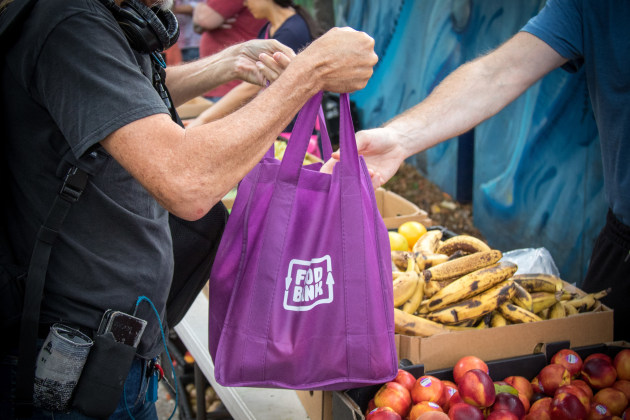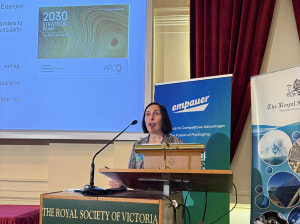Covid, ongoing poverty and inequality, and natural disasters saw Foodbank Australia provide almost 87 million meals – 230,000 meals per day – in 2021. CEO Brianna Casey says the ongoing need for huge volumes of food and groceries relief shows many Australians are still doing it extremely tough.
“It’s not just COVID-19 contributing to food security issues in Australia,” Casey said.
“Right now, we’re seeing food supply problems in Northern Territory and Western Australia after last week’s floods in South Australia cut both road and rail movement of food and groceries.
“Any supply chain interruption tends to hit vulnerable communities the fastest and the hardest, making our food relief efforts all the more important,” she added.
Foodbank sources a wide and diverse range of food and groceries to provide relief to more than one million people each month. Donations are sourced from the food and grocery sector and key staples are purchased through funding from the Federal Government, corporate Australia and individuals.
Casey said the food and grocery sector has been “incredibly generous” in its support, particularly in recent years with the pandemic and natural disasters including the 2019/20 Black Summer Bushfires and extended drought.
Danone donated $60,000 from a seven week campaign in November; family owned meat company Australian Country Choice supplied more than 30,000 kilograms of meat in the last two years; and Nescafe Blend 43 donated 220,000 tins of coffee, with Casey saying for those faced with food insecurity coffee is often one of the first items they forego.
Many food and beverage manufactures have long standing supply programs with Foodbank, with Mars Food Australia expected to have provided around 600,000 meals by the end of 2021. It also provided 175,000 jars and bottles of dinnertime products.
“Although we are pleased to have been able to source this staggering amount of food and groceries in 2021 – a year in which many of our food donors and corporate partners also faced enormous challenges – it is a stark reminder of Australia’s ongoing hunger problem, which existed well before the global pandemic hit.” Casey said
In a ‘normal year’ Foodbank provides relief to more than 815,000 people every month, but Casey pointed out that since 2020, there has been no ‘normal year’.
In 2020, demand for food relief increased by 47 per cent, with three in 10 Australians being food insecure for the first time in their lives. Foodbank obtained close to 49 million kilograms of food and groceries for people in need, nearly a 15 per cent increase on 2019 (there was a slight drop in 2021 to 48 million kilograms in 2021).
“From April to July in 2021, Foodbank purchased more food and groceries than we had in the previous three years,” Casey said.
Last year, Foodbank’s annual Hunger Report revealed one in six adults didn’t have enough to eat and 1.2 million children went hungry.

“We also know that two in five people seeking food relief do not get enough food for their household needs. So, although 48 million kilograms seems like – and is – a lot of food and groceries, it unfortunately wasn’t enough to meet the current demand from those seeking food relief, let alone those who don’t even reach out for help because they think someone needs that help more than they do,” Casey said.
The report revealed that more than half of the people impacted by severe food insecurity go a whole day every week without eating. One in three people struggling to meet their food needs are new to the situation and 64 per cent of people experiencing food insecurity have a job.
Foodbank provides relief to 2950 frontline charities and 2890 school breakfast programs. It works with the entire Australian food and grocery sector including farmers, wholesalers, manufactures and retailers who donate and redirect surplus product to be distributed to those who need it most via Australia’s charity network.
It supplies food relief to more than one million people every month.








